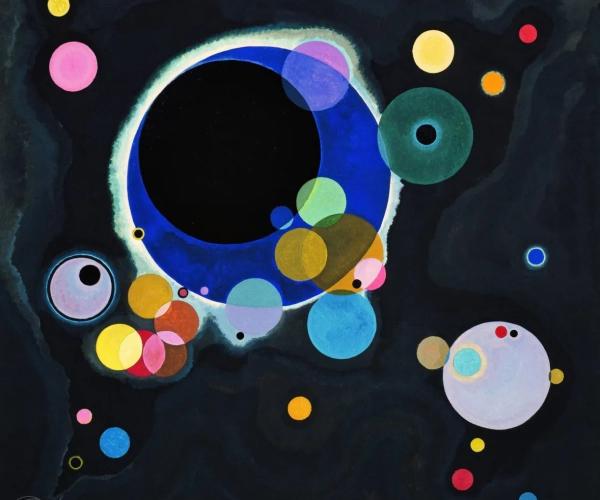Several Circles
Wassily Kandinsky, a pioneer of abstract art, created "Several Circles" in 1926. The painting is a striking example of his non-representational approach, with vibrant colors and dynamic shapes. Kandinsky believed that colors and forms could evoke emotional and spiritual responses, and this philosophy is evident in "Several Circles."
The painting features a series of concentric circles in bold hues of yellow, red, blue, and white, set against a black background. The circles seem to pulsate and overlap, creating a sense of rhythm and movement. Kandinsky's use of color and form is harmonious yet lively, inviting viewers to engage with the composition on a visceral level.
"Several Circles" reflects Kandinsky's deep interest in the interplay between color, shape, and sound. He saw a strong connection between visual art and music, and this synthesis is evident in the rhythmic and melodic quality of the painting. The circles appear to dance and sing, creating a sense of joy and energy.
Kandinsky's abstract works were revolutionary in their time, challenging traditional notions of art and representation. "Several Circles" is a testament to his innovative vision and his belief in the power of art to transcend the material world and communicate on a spiritual level.
In conclusion, "Several Circles" is a vibrant and dynamic example of Wassily Kandinsky's pioneering abstract art. Through its bold colors, rhythmic forms, and emotional resonance, the painting invites viewers to experience the harmonious interplay of color, shape, and spirit.







No Comments Yet...